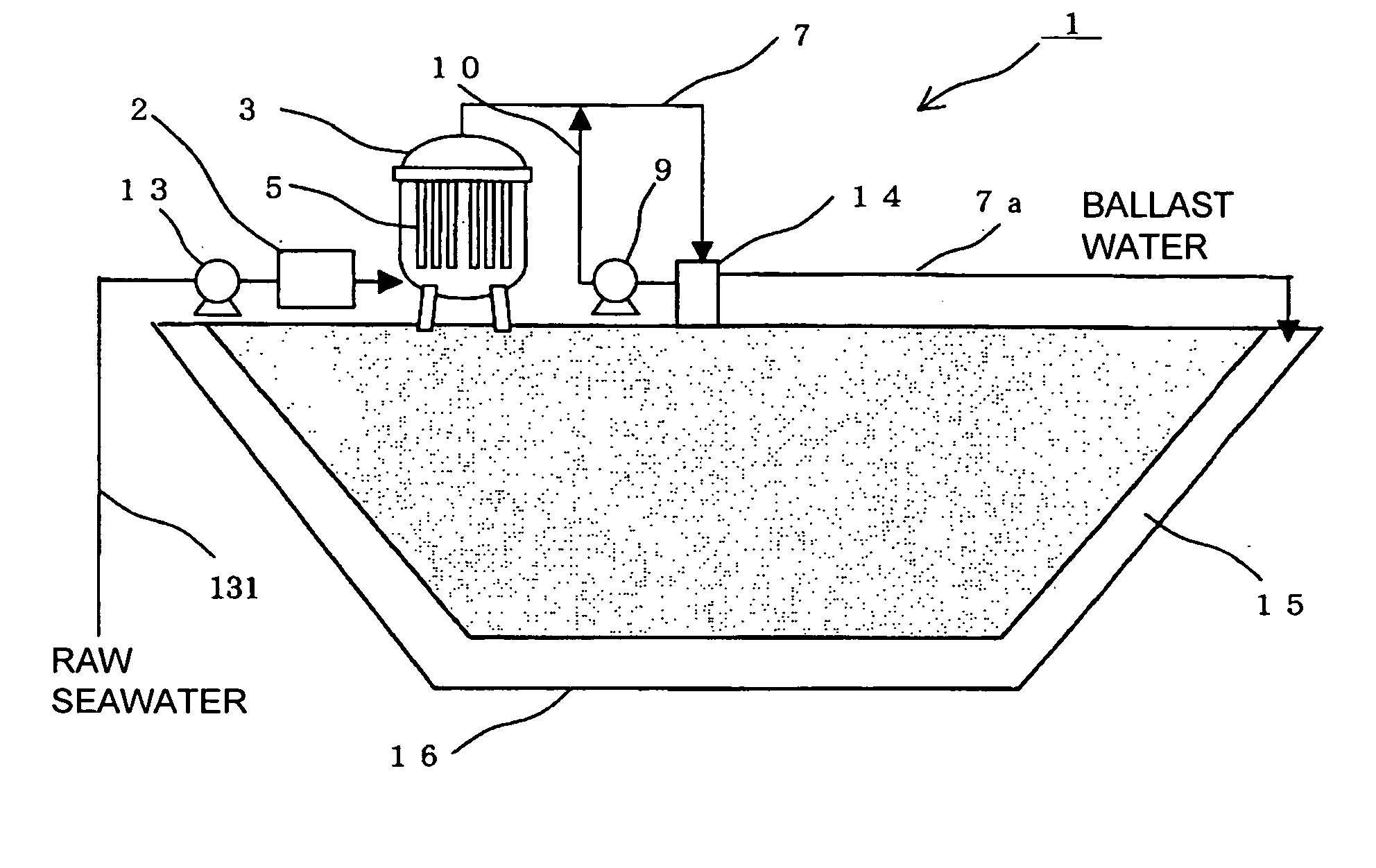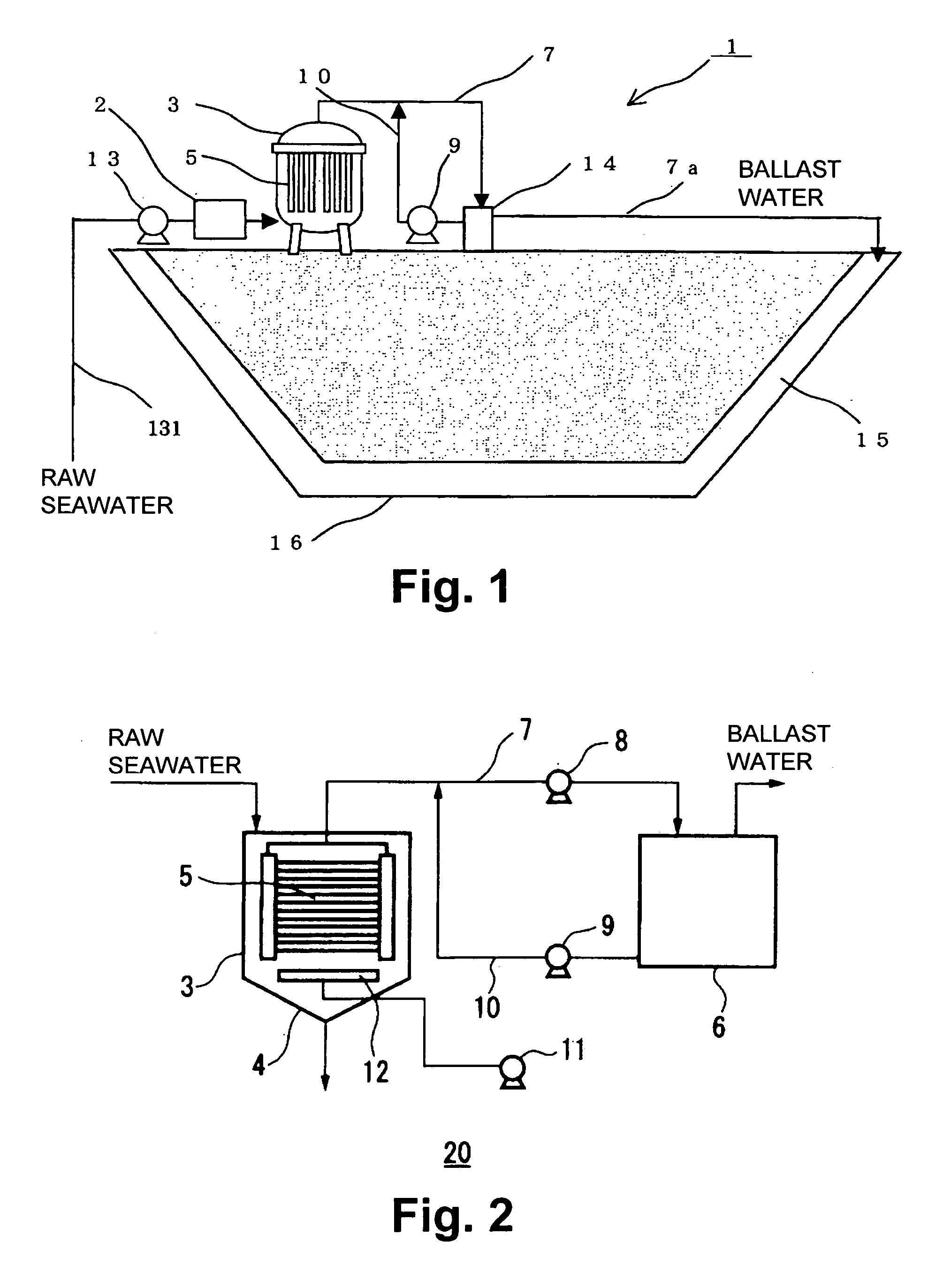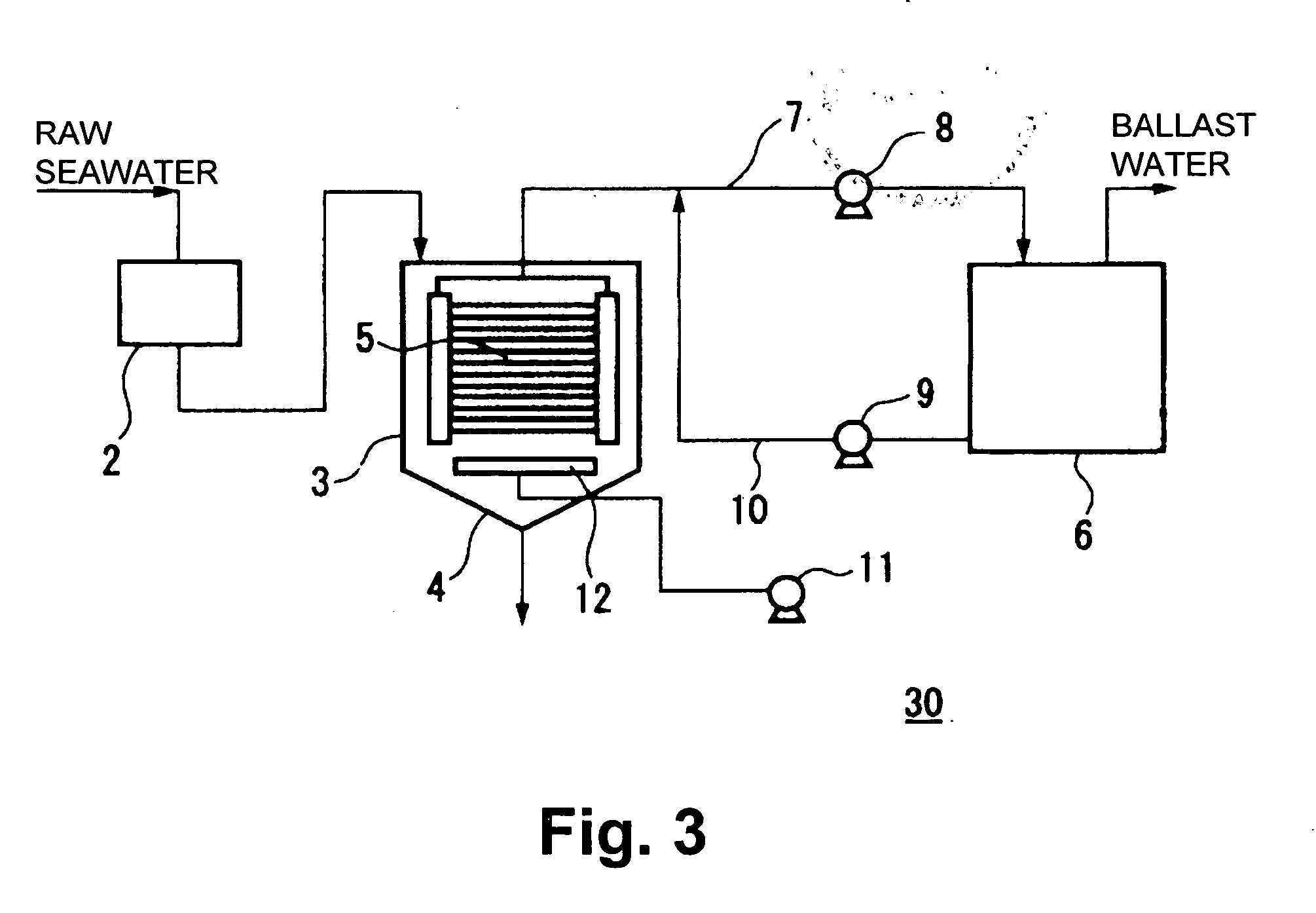Process For Producing Ship Ballast Water, Ship Ballast Water Producing Apparatus And Use Thereof
a technology for ballast water and production equipment, which is applied in the direction of separation processes, vessel construction, and membranes, etc., can solve the problems of high equipment cost, high equipment cost, and inability to completely destroy microorganisms,
- Summary
- Abstract
- Description
- Claims
- Application Information
AI Technical Summary
Benefits of technology
Problems solved by technology
Method used
Image
Examples
example 1
[0038] Seawater in a domestic port area “A” in which a ship was staying (hereinafter, referred to as “raw seawater”) was treated by use of a ballast water producing apparatus as will be described below, and under operating conditions as will be described below. Coliform bacteria in the raw seawater and treated water (membrane filtered water) were measured by the following measurement method. It should be noted that the raw seawater had an oil content of 8 mg / L in the form of an n-hexane extract, and had a turbidity of 5 NTUs.
(Ballast Water Producing Apparatus)
[0039] An apparatus as shown in FIG. 2 was used. A ballast water producing apparatus 20 having a hollow fiber membrane type microorganism filtration device 3 as a main part, in which a hollow fiber membrane module 5, “STERAPORE SUR31534” (manufactured by Mitsubishi Rayon), made of microfiltration membranes having a treatment capacity of 3 m3 per hour, was immersed in a treatment chamber 4, was used. The hollow fiber membrane...
example 2
[0043] Example 2 was performed in the same manner as in Example 1, with the exception that the raw seawater was treated by use of a ballast water producing apparatus as will be described below, and under operating conditions as will be described below.
(Ballast Water Producing Apparatus)
[0044] An apparatus as shown in FIG. 3 was used. A ballast water producing apparatus 30 includes an oil water separation device 2, “DIAMARS RH-03” (manufactured by Mitsubishi Rayon Engineering) having a treatment capacity of 3 m3 per hour, a hollow fiber membrane type microorganism filtration device 3, and a treated water reservoir 6, which were provided, in that order, from an upstream side. The hollow fiber membrane type microorganism filtration device 3, in which a hollow fiber membrane module 5, “STERAPORE SUR31534” (manufactured by Mitsubishi Rayon), made of microfiltration membranes having a treatment capacity of 3 m3 per hour, was immersed in a treatment chamber 4, was used. The hollow fiber...
example 3
[0047] Instead of the immersion type hollow fiber membrane type microorganism filtration device 3, a pressure type hollow fiber membrane type microorganism filtration device (not shown) was used, and the air-bubble washing and the periodic backwashing step were performed in the same manner as in Example 1. For a hollow fiber membrane module used in the pressure type hollow fiber membrane type microorganism filtration device, three microfiltration membranes “STERAPORE G-type UMF-2024WFA” (manufactured by Mitsubishi Rayon) having a treatment capacity of 3 m3 per hour, were used.
(Results of Treatment)
[0048] Although the number of coliform bacteria in the raw seawater was 35 per 100 mL, no coliform bacteria were detected in the treated water. Further, no n-hexane extract was detected in the treated water, and the turbidity was no greater than 2 NTUs. It should be noted that the microfiltration membrane differential pressure data was similar to that of Example 2.
[0049] As shown in th...
PUM
| Property | Measurement | Unit |
|---|---|---|
| Pressure | aaaaa | aaaaa |
| Content | aaaaa | aaaaa |
| Hydrophobicity | aaaaa | aaaaa |
Abstract
Description
Claims
Application Information
 Login to View More
Login to View More - R&D
- Intellectual Property
- Life Sciences
- Materials
- Tech Scout
- Unparalleled Data Quality
- Higher Quality Content
- 60% Fewer Hallucinations
Browse by: Latest US Patents, China's latest patents, Technical Efficacy Thesaurus, Application Domain, Technology Topic, Popular Technical Reports.
© 2025 PatSnap. All rights reserved.Legal|Privacy policy|Modern Slavery Act Transparency Statement|Sitemap|About US| Contact US: help@patsnap.com



